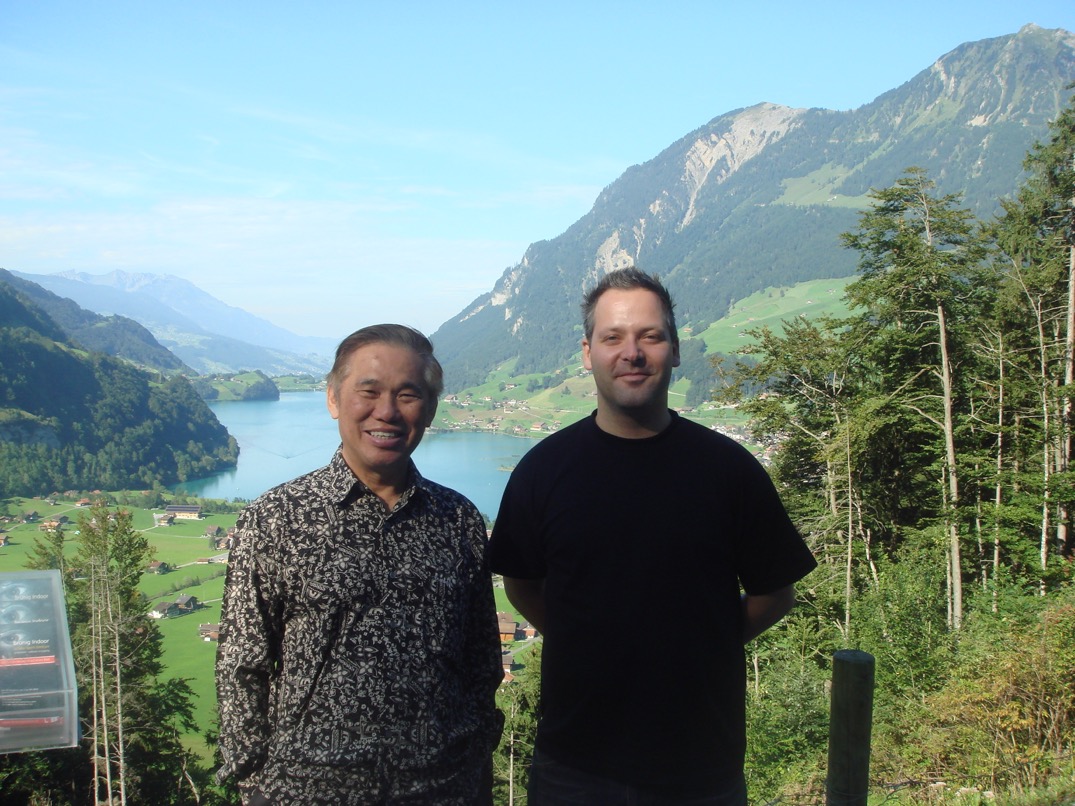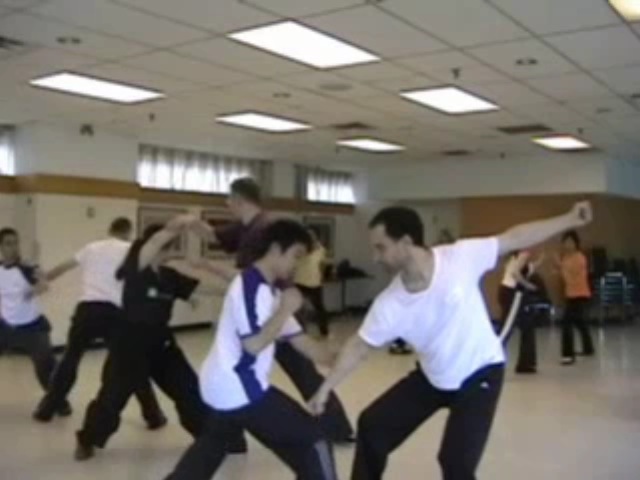THE MUNDANE AND SUPRA-MUNDANE GOALS OF ZEN CULTIVATION

Having Good health and vitalit are important goals in our Zen training
Question 3
The ultimate goal in Zen Buddhism is to attain the supreme perfect Enlightenment (anuttara samyak sambodhi) and the path to this may be gradual or sudden. At times in the past I recall you mentioned that most people are not ready for the ultimate goal and so the aims may be more mundane.
Despite more mundane objectives do the training methods we use in our school actually represent the gradual path and are there specific sign posts or milestones that can be used to verify ones progress towards the ultimate goal.
Joel
Answer
The ultimate goal in Buddhism is to attain perfect Enlightenment. This can be achieved in a sudden or a gradual way.
Zen Buddhism represents the sudden way. When a practitioner attains perfectly no thought, he attains perfect Enlightenment in an instant.
Other schools of Buddhism represent the gradual way. A practitioner first attains a one-pointed mind. Then he employs the one-pointed mind to contemplate on Cosmic Reality. When he realizes that Cosmic Reality is undifferentiated, he attains perfect Enlightenment.
It is the same Enlightenment, but the approach is different. The meditation methods are different too. In Zen, the meditation is on no thoughts. In other schools of Buddhism, the mediation goes through the processes of concentration and contemplation.
Yes, most people, including ourselves in Shaolin Wahnam, are not ready to this ultimate goal of attaining perfect Enlightenment. We are more interested in the mundane aims of attaining good health, vitality, longevity, mental freshness, spiritual joys and combat efficiency.
But in realizing these mundane aims our training methods represent the sudden path of Zen, rather than the gradual path of other schools, Buddhist or otherwise. Even in Taijiquan, which manifests Tao rather than Zen, our methods are sudden rather than gradual.
In chi kung, for example, the gradual path, which is the normal path of most chi kung practitioners, is to practice a technique over and over again to acquire the necessary skills which then lead to desired results. Chi kung practitioners in general can generate an energy flow only after many months or years of dedicated practice.
But in our school, we employ the sudden path. Students at my intensive chi kung courses, for example, can generate an energy on the very first day. Students in regular classes may take a few days, not because our instructors are unable to guide them to do so in one day but because as they have more time than students at intensive courses, the instructor purposely spread over the skills development over a longer period for the students' benefit. But compared to other students, it is very fast.
Other practitioners have to practice for many months, if they are lucky, to experience internal force. Most of them have no opportunity to experience internal force at all. Our Shaolin and Taijiquan students could experience internal force in just one day.
Indeed, we have become so cost-effective in achieving chi kung and kungfu results, like chi flow and internal force, that it has become ridiculous – in a good sense.
How is it that we can be so successful in using the sudden approach to achieve results in such a short time, when other people have to use the gradual approach which takes a much longer time? This is because of heart to heart transmission, which is a hallmark of Zen.
Most monks would have to cultivate for a long time before they could attain Enlightenment. But when the Buddha showed a flower to Kasyapa, Kasyapa smilled and attained Enlightenment in an instant. This was due to the heart to heart transmission from the Buddha to Kasyapa.
Hui Ke had to wait for a long time before Bodhidharma taught him. But when Bohdidharma asked Hui Ke to bring out his mind so that Bodhidharma could show him how to pacify it, Hui Ke was enlightened in an instant. This was due to the heart to heart transmission from Bodhidharma to Hui Ke.
Just now in the Intensive Chi Kung Course in Sabah, students, including many beginners, had a cosmic shower in just one session, whereas it would take other advanced practitioners at least a year or two to have a similar result. It was due to a heart to heart transmission from me to the students. We use the sudden path, whereas most other practitioners use the gradual.
The sign posts or milestones that verify success are the direct experience of the practitioners. Practitioners know that they can generate an energy flow when they generate an energy flow. They know they can develop internal force or enjoy a cosmic shower when they have developed internal force or are enjoying a cosmic shower.
Realizing the ultimate goal of perfect Enlightenment is not an aim in our school. Our aims are mundane, and down to earth, and can be generalized as enjoying good health, vitality, longevity, mental freshness and spiritual joys, and for those who practice Shaolin Kungfu and Taijiquan, combat efficiency. We know we have realized these aims when we directly experience the results, though for longevity, many of our Shaolin Wahnam members have to wait for 30 to 50 years before they can confirm it.
But for academic interest, yes, there are sign posts or milestones that can be used to verify ones progress towards the ultimate goal. Like in the mundane aims, the best sigh posts and milestones are direct experience. Firstly, there is a surge of compassion towards all living beings, including non-human. While a surge of compassionate feeling may be due to other factors besides progress towards attaining Enlightenment, such a progress is always preceded by a surge of compassion.
Then there is an urge to know what lies beyond physical life. Similarly, there may be other factors resulting in this urge, but spiritual progress is usually preceded by such an urge.
A sure sign post or milestone is an experience of spiritual awakening, like experience his spirit expands beyond his physical body, or he is no where and everywhere. It is amazing that many of our students have such experiences during their chi kung or kungfu practice.

Many kungfu practitioners in our school attain beautiful spiritual experiences during kungfu practce
The above is reproduced from the thread 10 Questions to the Grandmaster about Zen in the Shaolin Wahnam Discussion Forum
LINKS
